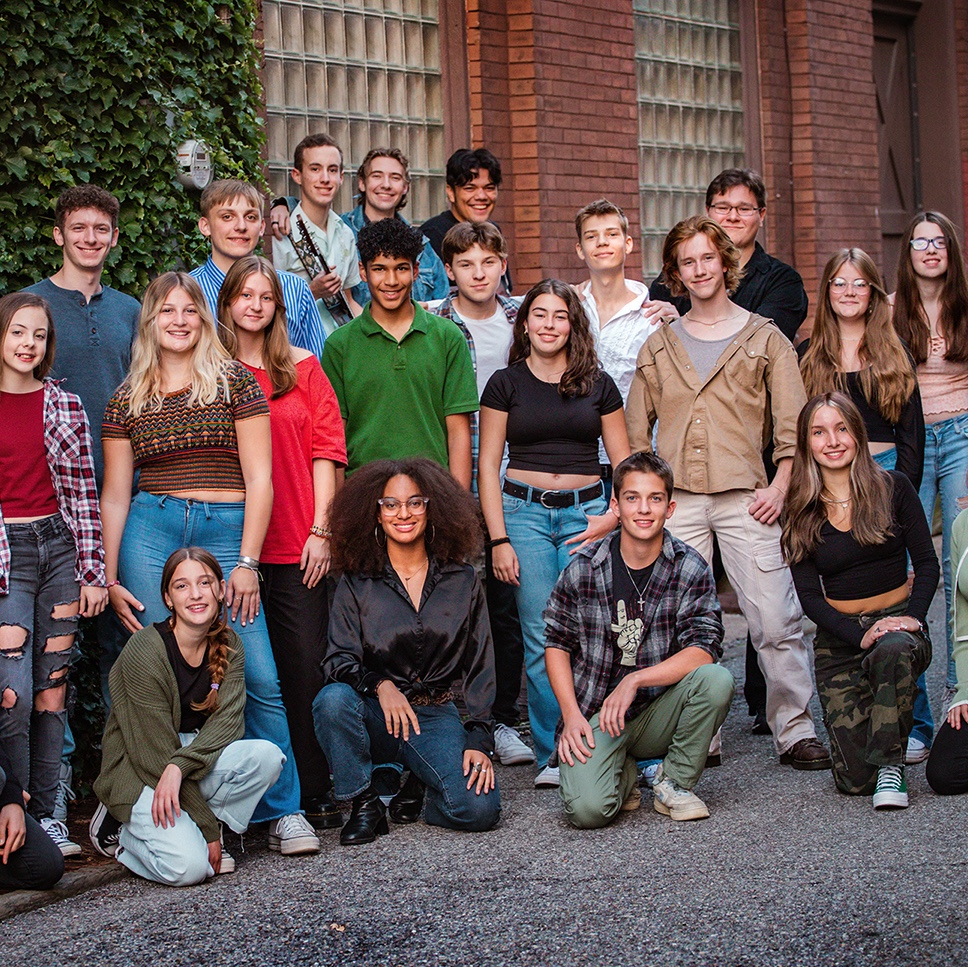Spend a weekend in historic Muncy
Stroll through celebrated Muncy homes
MUNCY – Experience the beauty and charm of one of Pennsylvania’s finest communities as the Muncy Historical Society hosts its annual Historic Homes and Walking Tour from noon to 4 p.m. Sunday, October 16. The $12 tour donation includes admission to celebrated Muncy homes and businesses, shopping opportunities, refreshments and interaction with members of the Pennsylvania Past Players.
The historical society offers its guests a different experience each year and, on Oct. 16, a combination of historic properties, incredible exhibits and personal engagements are included.
The first stop and the ticket center for the Homes and Walking Tour is the Muncy Historical Society, housed in one of Muncy’s earliest clapboard homes. The two and one-half story, seven-bay frame building represents the Greek revival style.
The Civil War theme continues with this year’s special exhibits at the 40 N. Main St. location. One exhibit features a museum-quality display of Civil War Officer Presentation Swords” which served to decorate, recognize the rank or authority of, and award distinguished soldiers and officers during the war. The presentation swords reflect master craftsmanship and art, with fine engravings and elaborate scrollwork on the blade and hilts.
Several of the museum’s swords will be on display nearby and the contrast between dress, ceremonial or presentation versus battle-ready swords will be apparent. The other exhibit will feature Civil War-related memorabilia specifically belonging to young men from the Muncy area including William Mohr’s drum, Capt. Peterman’s uniform, Dr. Hayes’ pistol, Lt. Colonel Milton Opp’s field desk and other veteran artifacts.
The properties are always interesting since the historical society features homes representing a variety of architectural styles, from colonial to Federal to Victorian eclectic. Some of the properties have been adapted for 21st century use: a female seminary and boarding house converted into one-family dwellings; a one-family, then a two-family dwelling now serving the community library; a colonial dwelling into a florist and gift shop; and a laid-up block garage into an artist’s studio.
One of the featured homes on this year’s tour is Muncy’s only Quaker stone house built in 1820. The house has been the home of many distinguished Muncy families including the Edwards, Rogers, Peterman, Taggart, Rickolt, Godbey, to the present owners, artists Bruce and Nella Storm.
The Savannah, Georgia-based Taggart Family, who brought their servants with them when they came to their Muncy home each summer, first made enlargements and major improvements to the house. To make this house their home, the talented Storms explored creative solutions by enclosing the screened-in porch, which serves as their fireplace room; readapting the attached garage to serve as Bruce Storm’s studio; and the couple totally renovated the third floor attic, creating additional living space, complete with antique and stain glass windows, Nella Storm’s art studio and the master bedroom suite.
“It was very important to us that we maintain the architectural and historic integrity of this 19th century structure,” Nella said. “And, as avid collectors, we needed to capitalize on every available space to accommodate our antique furnishings and fine art.”
She added, “Some doorways were closed-off, china closets were built-in, and, in one case, a ceiling dome was added so that our lead crystal chandelier could be hung. We were able to use a number of significant items that we had previously purchased, but had stored, including a magnificent New England circa 1780s fireplace surround, an Empire cast iron fence, and a Benjamin Pott door.”
The Storm’s antique collection have been borrowed for the Palmer Museum’s PA Tri-Centennial Exhibit at Penn State University and featured in Colonial Homes magazine.
In addition to the featured historic homes, this year’s tour includes an opportunity to come face-to-face with people whose joys and sorrows, triumphs and sacrifices marked the years of the Underground Railroad and the Civil War.
Living historians will give listeners a chance to meet the people, famous and forgotten, whose lives were shaped by the events commemorated in this, the 150th anniversary year of the start of the Civil War. Four members of the Harrisburg-based Pennsylvania Past Players Company will use a combination of storytelling, personal engagement and informal interaction to share their stories. Coming to Muncy for the afternoon will be Frances Harper, antislavery orator, civil rights, women’s rights and temperance advocate; Dr. Henry Palmer, surgeon in charge of the largest Civil War military hospital; Marie Tepe, a vivandiere who nursed the wounded and brought water to the dying, wounded at the Battle of Fredericksburg, and recipient of the Kearny Cross; and John Morgan, drummer boy, who enlisted at the age of 15.
Ticket holders may park in one of the centrally located designated areas and most of the Muncy properties are within easy walking distance.
Advance tickets, at the discounted price of $10 for the Historic Homes and Walking Tour, may be purchased from 9 a.m. to noon, October 10 and 14, or by mail at P.O. Box 11, Muncy, PA 17756. Tickets the day of the tour are $12 and may be purchased at the Muncy Historical Society.
More information is available by calling the Muncy Historical Society at 546-5917. On the Internet at www.MuncyHistoricalSociety.org.
On the Tour
Muncy Historical Society & Museum–Restroom/Parking
The first stop, and the ticket center, is the Muncy Historical Society, housed in one of Muncy’s earliest clapboard homes. The 2-½ story, seven-bay frame building is in the Greek revival style.
The Civil War theme continues with this year’s special exhibit that features Muncy-area Civil War-related memorabilia and a museum-quality display of “Civil War Officer Presentation Swords” from a private collection. Memorabilia belonging to William Mohr, Captain Jacob Peterman, William Wood, Dr. Wm. Hayes, Lt. Colonel Milton Opp and other area Civil War soldiers will be featured.
McCarty House, Creative Necessities
Shortly after arriving in Muncy circa 1791 William and Mary McCarty built a suitable home for their family. As one of Muncy’s founding fathers, William McCarty extends his personal greetings and invites you to come in and visit!
It seems fitting that their last surviving son, John McCarty, also joins us in the festivities – his portrait will be on display — pay particular attention to bachelor John’s beard, often mistaken for a collar. Known as “Uncle John” by the townspeople, it is rumored that he used his home to safe harbor slaves on their journey north. Artifacts recovered during an onsite archaeological dig are also exhibited.
Corson-Houseknecht-Kennedy House & Studio
Canal boat captain William Corson purchased the lathes to construct the walls in this house in June, 1862. He and his wife, Lavina, reared their children here and one of their sons, Harry, took ownership; Ralph and Mary Lavina Houseknecht then owned the property for 60 years, and in 1980, Bill and Selinda Kennedy moved in.
Featured are various collections of family heirlooms from both Bill’s and Selinda’s families dating from the early 1800s including a large collection of Italian pottery along with the silhouettes and daguerreotypes; the original slate fireplace front added to the home with clay mosaic insert made by Selinda herself; and the mural in the stairwell by Nella Godbey Storm.
Also on tour is the working pottery studio where Selinda demonstrates her nationally-recognized talent as a master potter with a unique sense of color, craftsmanship and whimsy.
Frances (Watkins) Harper, Muncy Public Library
Frances Harper, the major black woman poet of the 19th century, achieved high distinction and great popularity as an anti-slavery orator who turned to the causes of temperance and woman suffrage after the Civil War. She was a writer, lecturer, and political activist who promoted abolition, civil rights, women’s rights, and temperance. A trained seamstress, Harper gave up an early career, choosing instead to earn her living as a public lecturer; her significance lies in her involvement in the major movements of the latter 19th and early 20th centuries, and her writing resonates with the causes to which she dedicated herself.
Mrs. Harper, with conversation on abolition, civil rights, women’s rights, and temperance, can be found on the porch or just inside the Muncy Public Library (MPL). MPL was founded by the Tuesday Study Club and housed in the Muncy Historical Society until 1965 when it was moved to 15 N. Main Street. In 1970 it was relocated to its current location in this early 19th century 2-½ story, seven-bay clapboard building with two front entrances. The Library’s current home has been re-purposed many times. It even housed a ladies’ hat factory, and the two maiden ladies who made the hats resided on the second floor.
The Library was forced to temporarily relocate when in July 1981 it was struck by an arson fire that destroyed much of its collection. Through the hard work of Muncy’s dedicated citizens, the Library rose from the ashes, and in 1983 re-opened with the building’s original facade plus a new addition. And now, 28 years later, the Library has outgrown its lovely home. In order to continue to meet the needs of our growing community, the Library Board of Trustees has acquired a parcel of land within the Borough and plans to begin the Capital Campaign to build a larger, more user-friendly facility in the near future.
Dr. Henry Palmer, Grenoble Funeral Home
Dr. Palmer, a New Yorker by birth, entered the volunteer service as surgeon of the 7th Wisconsin Infantry and was assigned to the Army of the Potomac. In 1862 President Lincoln appointed him Brigade Surgeon of the “Iron Brigade” and later placed him in charge of the largest military hospital located in York, PA. He was taken prisoner by the Confederates but escaped during the Battle of Gettysburg; he armed his convalescents to help protect the Maryland-Pennsylvania border from southern attacks; was appointed medical inspector of the 8th Army Corps and in 1865 was reassigned to Camp Douglas, Chicago, being mustered out with the brevet rank of lieutenant colonel.
Dr. Palmer shares his story in the front room at the Grenoble Funeral Home. Originally on this site was a small 1-½ story frame building that was extensively expanded in 1803 by the General John Burrows’ family to its present 2-½ story, five-bay frame structure. The one-time tavern or public house and stagecoach stop is another example of an adaptive use, serving as a private residence and the community as a funeral home.
Marie Tepe, Montgomery House
When the Civil War began in 1861 there were women who were ready to join with the men to defend their country. Marie Tepe was one such courageous woman. In the spring of 1861 Tepe became a vivandiere in a Zouave unit.
Vivandieres who served during the Civil War showed great courage in the face of battle. “French Mary,” as she was often called, volunteered her services as a nurse and circulated among the thirsty troops with her canteen, braving heavy fire, “her skirts riddled with bullets.” For this “meritorious conduct in battle” Tepe became one of only two women awarded the Kearny Cross. She was wounded in the Battle of Fredericksburg and fought with her unit at Gettysburg. After a few weeks of tending to the injured at Gettysburg she rejoined her regiment and served through to the end of the war. These daring souls, like Marie Tepe, are the forgotten women of the war.
Marie shares her story of risk and adventure in the formal parlor of the Montgomery House…a house As you approach, notice the many characteristics of this style – its many gables, adorned with ornate cornices and brackets; the thick window heads supporting the arched windows and door frames; and stone quoins accenting its corners.
Edwards-Peterman-Storm House
Built by Abel Edwards, circa 1820, this house has been home to many of Muncy’s families including the Edwards, Rogers, Petermans, Taggarts, Rickolts, Godbeys and, to today’s present owners, artists Bruce and Nella Storm. Since its original construction the home has been expanded and transformed, all without losing any of its architectural integrity or historically-accurate significance.
The fencing, recently installed, is Empire cast iron fence seen toward Main Street while a PA-made wrought iron fence surrounds the perennial garden area.
On the alley, the Benjamin Pott door, salvaged from a Montoursville home that was razed many years ago, is now the home’s front door. This entrance was formerly into a screened-in porch, now weatherized for all year use. This house has been transformed into an artist’s home – meticulously installing a ceiling dome to hold a crystal chandelier, recycling a circa 1780’s New England fireplace, and creatively solving the storage problems so often experienced in older homes!
Antique furniture, clocks, pottery, stained glass, fine art and sculptures, china and collections along with the work of local contemporary artists and the Storms themselves are all pleasing to the eye.
Boarding House, Civil War Veteran John Morgan, Drummer, & The Muncy Female Seminary
The first of the two private dwellings, a three-bay, federal-eclectic frame, is single-gabled with a metal roof. William Michael bought the property directly from the Henry Pepper estate and almost immediately entered into an agreement with his neighbor Charles McCarty for well and pump rights. Innkeeper David Billman spent three years here letting rooms to the public, making this a most convenient boarding house for teachers employed at the adjacent Rev. Smalley’s, and later, Mrs. Life’s Female Seminary.
This home’s entrance leads one through a small vestibule and through French doors and into the charming living room, made comfortable with its simple-surround, gas-converted fireplace; a dining room furnished with family heirlooms and locally-made period furniture – corner and jelly cupboards, pegged drop leaf table with Windsor-style chairs, cedar chest, tool box and framed needlework. The renovated kitchen features a tin ceiling, original wood floor and 19th century pantry-styled, functional cupboards. Wainscoting and the 1890s farm-style sink finished off the renovations.
15-year old John Morgan was eager to be at the front and dreamed of glory! When the call came for the enlistment of drummer boys to serve in the Civil War, Morgan went post haste to Doylestown, in Bucks County, and enlisted. It was his, and other drummer’s, rhythmic beating that would set the marching pace and, in trying times, bring cheer to the troops and boost morale. Morgan remembers “the over-tired muscles after a long day’s march over Northern fields and Southern miles, scorching sun and blinding storms, when the drum grew heavier and heavier…” and he’ll share some of his experiences as he wanders around this home in the south end of town.
This area was originally known as “Pepperville” before it was sold to Charles McCarty in 1820 to settle the affairs of Henry Pepper, who had once served as a gardener on the Samuel Wallis estate. In 1847, Presbyterian minister, John Smalley relocated his select school for girls to this site and learning flourished in classes focused on painting, interior decorating, French, music and literature. Mrs. Susan Life became principal in 1857 and under her tutelage the school offered piano, singing, painting on canvas and china, embroidery, English and French along with more serious topics, the studies of mental and moral philosophy. Julia Ross took over in 1870 and Rose Cleveland, the younger sister of President Cleveland, was one of her teachers. Her school, the last of Muncy’s schools for girls, closed in 1878; when this property was sold, it was sold as the “south half of the building”.
This “south half” property has recently undergone a facelift – the front, original section has been freshened with period-appropriate wall paint and the floors were refinished; the back portion required major renovations and included exposing the brick work of a former exterior wall, installing a recycled hardwood floor removed from another home, exposing ceiling beams, and redefining the kitchen space.






